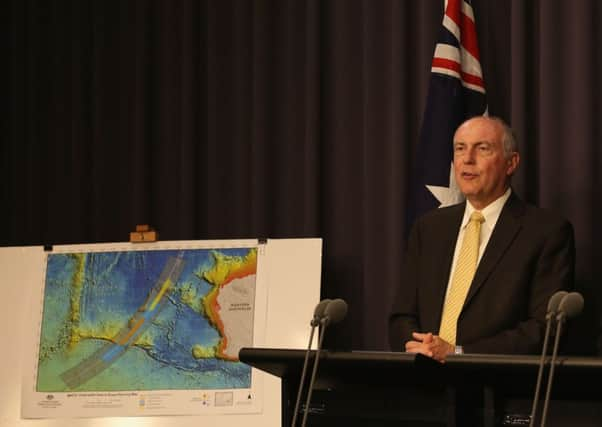Flight 370 ‘on autopilot before crashing in sea’


After analysing data exchanged between the plane and a satellite, they have announced another shift in the search area.
Officials believe Flight 370 was on autopilot all the time it was flying across the southern Indian Ocean, based on the straight path it took, Australian Transport Safety Bureau chief commissioner Martin Dolan said.
Advertisement
Hide AdAdvertisement
Hide Ad“We are confident that the aircraft was operating on autopilot until it ran out of fuel,” he told a news conference in Canberra.
Asked whether the autopilot would have to be manually switched on or could have been activated automatically under a default setting, he replied: “The basic assumption would be that if the autopilot is operational, it’s because it’s been switched on.”
But why the autopilot would have been set on a flight path so far off course from the jet’s destination in Beijing, and exactly when it was switched on, remain unknown.
“We couldn’t accurately, nor have we attempted to, fix the moment when it was put on autopilot,” Australian transport minister Warren Truss said. “It will be a matter for the Malaysian-based investigation to look at precisely when it may have been put on autopilot.”
The latest nugget of information came as officials announced yet another change in the search area for the plane that vanished on 8 March after taking off from Kuala Lumpur with 239 passengers and crew on board.
The transport safety bureau said it had made the assumption in defining the new search area that the crew was unresponsive, possibly suffering from oxygen deprivation, as the plane flew under autopilot. It said this was indicated by the loss of radio communications and the long period without any manoeuvring of the plane.
It emphasised, however, that this was only a working theory.
A loss of cabin air pressure could cause oxygen deprivation, or hypoxia, which could make pilots unable to perform even basic tasks.
Advertisement
Hide AdAdvertisement
Hide AdThe new search area is several hundred kilometres south-west of the most recent suspected crash site, about 1,100 miles off Australia’s west coast. Powerful sonar equipment will scour the seabed for wreckage in the zone, which officials calculated by reanalysing existing satellite data.
The shift had been expected, with Mr Dolan saying last week the new zone would be south of an area where a remote-controlled underwater drone spent weeks fruitlessly combing 850 sq km (330 sq miles) of seabed. That search area was determined by a series of underwater sounds initially thought to have come from the plane’s black boxes. But those signals are now believed to have come from some other source.
The new 23,000-sq mile search area falls within a vast expanse of ocean that air crews have already scoured for floating debris, to no avail. Officials have since called off the air search, since any debris would probably have sunk long ago.
The hunt is now focused underwater. Beginning in August, private contractors will use sonar equipment capable of probing depths of 7km (4.3 miles) to comb the ocean floor. The job is expected to take 12 months to complete.
Two survey ships are mapping uncharted expanses of seabed before the sonar scanning starts. Mr Dolan said it was possible the mapping equipment could detect wreckage that may be lying on the sea floor, but that it was highly unlikely.
The search area has changed several times since Flight 370 dropped off radar. The plane’s communications systems were disabled, giving investigators little to work with beyond data gleaned from hourly transmissions, or “handshakes,” between the plane and a satellite.
University of New South Wales aviation expert Peter Marosszéky said if the autopilot was still working when the plane crashed, it suggested the aircraft’s communications systems had been switched off rather than disabled by a major malfunction or catastrophe.